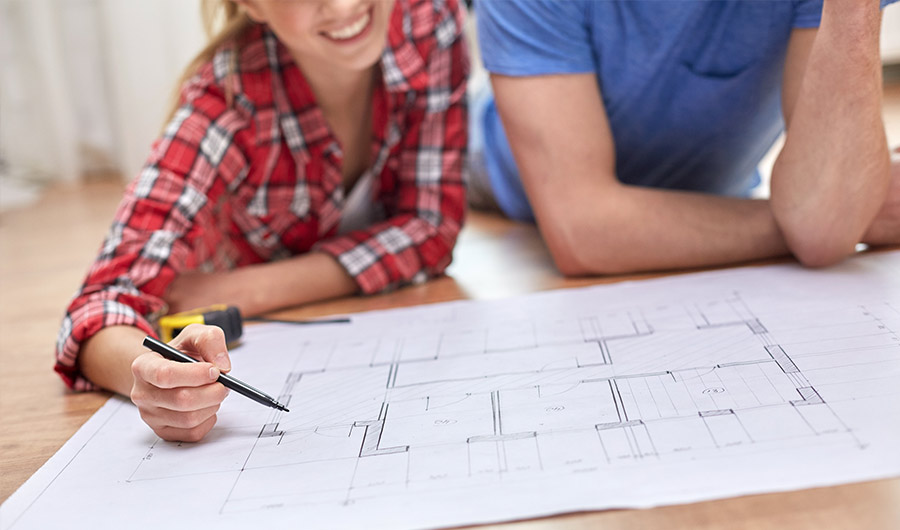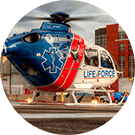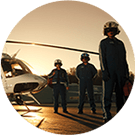Tackling DIY home projects can truly be a rewarding hobby. The satisfaction that comes with completing an improvement to your home is something that money can’t buy. Not only is DIY a fun hobby that allows you to improve your skills with practice, it’s a great way to add value to your property and make your home an even more special place to spend time with your family.
But it’s important to note that DIY projects don’t come without risk. At any one time there can be multiple hazards to be aware of including falling off a ladder, slipping off the roof, electrical shocks or cuts from power tools.
By taking a few precautions these risks can be mitigated, protecting you and your family from harm. Here are our tips for a safe and successful DIY project:
- Do your research
DIY projects can range from minor tasks like repainting a wall, to significant undertakings such as building a new patio. If you’re a regular DIYer, it can feel as though you’re capable of taking on any project. However, each project requires unique skills and knowledge, so we recommend spending some time doing a little research before you start.
Research the project online, speak to staff at your local hardware store or consult a book for tips and tricks. If in doubt, call an expert or professional. Most importantly, make sure you read any safety information or manuals relative to the tools required to complete your project.
- Set up a safe working space
Keeping your workspace tidy reduces any inherent risks significantly. DIY projects can easily get messy, particularly when you’re focused on the job at hand, however it’s crucial to clean your workspace as you go. This is especially important if children have access to the area.
Clear materials from walkways, tape down electrical cords, have someone on hand to help stabilize ladders, ensure that floor spaces are kept clear and unplug power tools when they’re not in use.
- Get the right safety gear
Depending on the tasks involved, it’s likely you’ll need some safety gear. Even for experienced DIYers, some safety equipment is necessary, even when working on a simple project. Essential items include:
- Protective gloves with reinforced palms
- Eye glasses
- Ear muffs or earplugs
- A hard hat
- A dust mask
- Electrical tape
- Non-slip, closed-toe shoes
- Flame-resistant coveralls
- A harness and safety rope for any roof work
Practicing a little precaution now can keep you safe and keep your project on track.
- Know your limits
Just because you’re the handyman or handywoman of the home doesn’t mean you’re equipped to handle every kind of DIY project. Plumbing and especially electrical are two areas where it’s advised to enlist the help of an expert. Hiring a professional means you’ll get the job completed at a high standard, and it provides an opportunity for you to learn more about the field. Make sure you ask questions in order to learn from the professionals.
Consider the future of your home. If you’re planning on resale, work needs to be done professionally, and also needs to be certified and inspected. If your work doesn’t pass code, then you’re in for big trouble down the line. If in doubt, use a professional.
- Have a plan
Accidents do happen, even to the most skilled and prepared DIYer. It’s important to have a plan in place in the event that you or your family suffer an unexpected injury.
Make sure your home is equipped with a full first aid kit as well as fire extinguishers or blankets. It’s also helpful to have a list of emergency numbers for when things do get out of hand—including professional tradespeople and the poison help line.
- Accident coverage
Joining the AirMedCare Network membership program provides you and your family with access to transportation to the closest appropriate medical facility in the event of an emergency, with no out-of-pocket costs. Knowing that you’ll be well cared for if something goes wrong in your home means that you can have peace of mind and focus on the task at hand.
Now you’re prepared to safely undertake your next home DIY project. Our very last tip is to make sure that once you’re finished, you kick back and enjoy the fruits of your labor. After all, you’ve earned it.
Don’t risk it. Join AMCN and get covered today!

How Air Ambulances Can Help Reduce Emergency Room Wait Times
Patient experience in healthcare has been a hot topic for the past 20 years. Studies show that when patients are happier with their care, they

Holiday Gifting for the Family That Has Everything: Unique Gifts They’ll Truly Appreciate
Finding the perfect gift for a family that seems to have it all can feel nearly impossible. They already own the latest gadgets, their home

A flight nurse’s courage: How one hero stepped up when it mattered most
Across the country, emergency medical professionals are trained to respond at a moment’s notice®. But sometimes circumstances make a difficult situation even more challenging —




